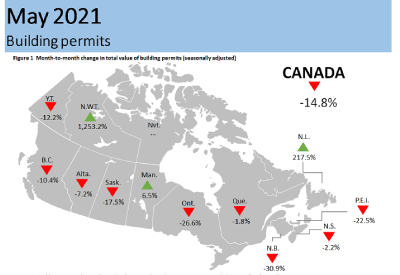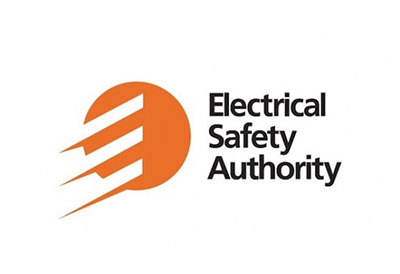Building Permits Drop 14.8% After Four Months of Record Highs

July 15, 2021
Following four consecutive months of reaching new highs, the total value of building permits dropped a record $1.6 billion (-14.8%) to $9.5 billion in May. Every component was down, with multi-family dwellings in Ontario accounting for nearly three fifths of the overall national decline.
On a constant dollar basis (2012=100), building permits decreased 14.5% to $7.1 billion.
Multi-family permits in Ontario pull residential sector down
The value of permits for multi-family dwellings dropped 20.6% to $3.3 billion in May, the lowest value since August 2020. Ontario was responsible for the majority of the decline.
All provinces except for Newfoundland and Labrador posted a decrease in the value of permits issued for single-family dwellings, which fell 10.6% nationally to $3.2 billion. Quebec accounted for almost half of the national decline, with fewer permits issued in municipalities outside of the census metropolitan areas.
Overall, the value of permits issued in the residential sector pulled back 16.0% to $6.5 billion.
Non-residential permits drop due to Ontario and Quebec
Construction intentions for the non-residential sector were down 12.2% to $3.0 billion in May, with Ontario and Quebec falling 21.5% and 22.9% respectively.
Commercial permits tumbled 15.8% to $1.6 billion overall. Ontario dropped 33.9% as no permit in excess of $25 million was issued for the province in May, compared with six in the previous month, worth a total of $295 million.
The value of permits issued for industrial buildings fell 14.6% to $511 million. Seven provinces reported a decline in this component, with Quebec recording the largest decrease. Quebec saw an uptick in April, largely due to a $105 million permit issued for renovations to a mining facility in the municipality of Sept-Îles.
The value of institutional permits decreased 3.4% to $900 million. Gains in four provinces, led by British Columbia and Manitoba, were not enough to counter a $115 million decline observed in Quebec.















